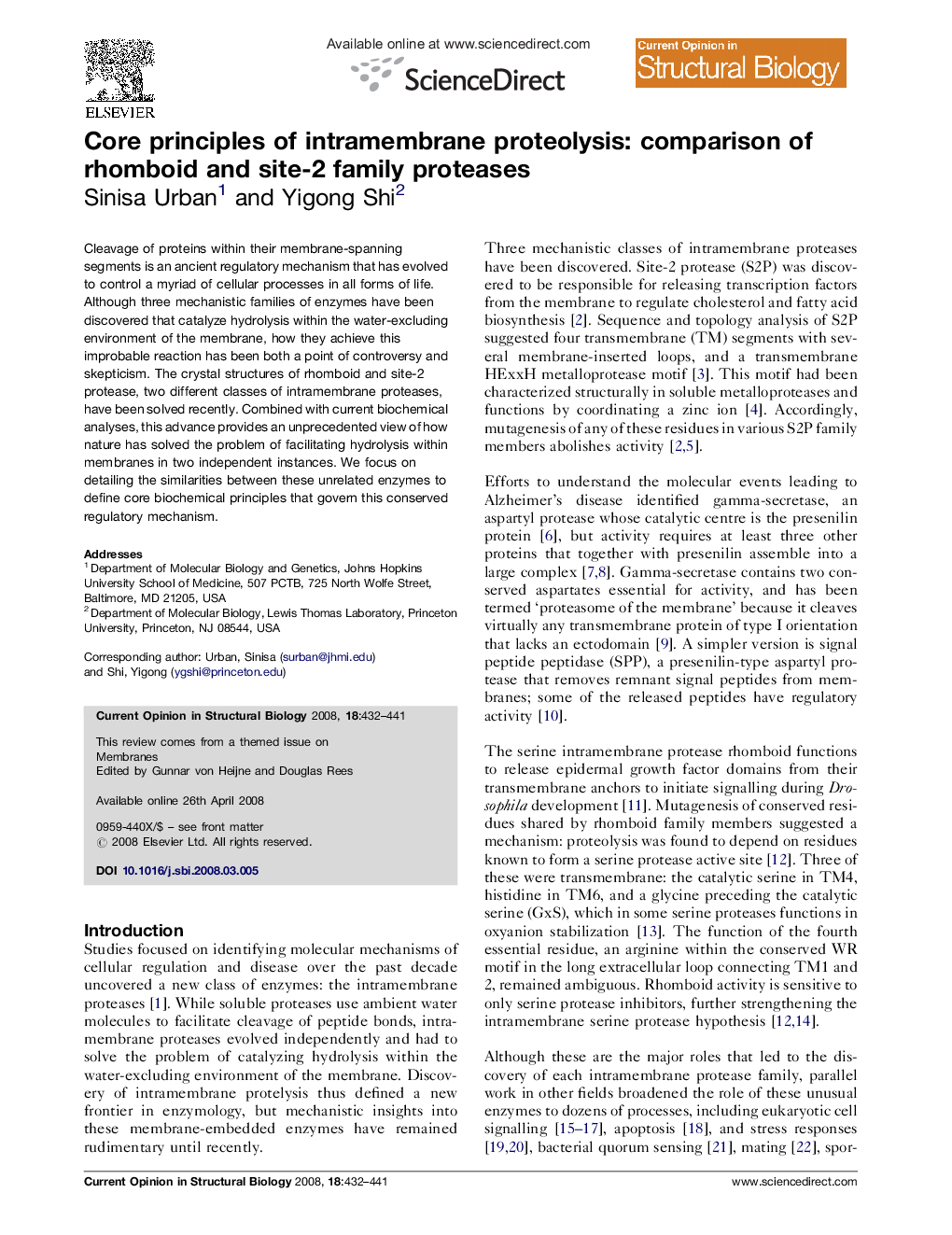| Article ID | Journal | Published Year | Pages | File Type |
|---|---|---|---|---|
| 1979666 | Current Opinion in Structural Biology | 2008 | 10 Pages |
Abstract
Cleavage of proteins within their membrane-spanning segments is an ancient regulatory mechanism that has evolved to control a myriad of cellular processes in all forms of life. Although three mechanistic families of enzymes have been discovered that catalyze hydrolysis within the water-excluding environment of the membrane, how they achieve this improbable reaction has been both a point of controversy and skepticism. The crystal structures of rhomboid and site-2 protease, two different classes of intramembrane proteases, have been solved recently. Combined with current biochemical analyses, this advance provides an unprecedented view of how nature has solved the problem of facilitating hydrolysis within membranes in two independent instances. We focus on detailing the similarities between these unrelated enzymes to define core biochemical principles that govern this conserved regulatory mechanism.
Related Topics
Life Sciences
Biochemistry, Genetics and Molecular Biology
Biochemistry
Authors
Sinisa Urban, Yigong Shi,
